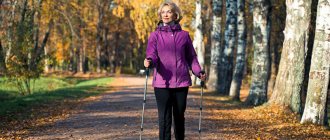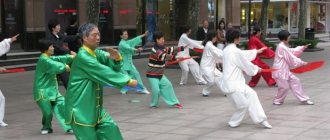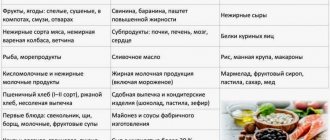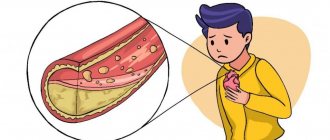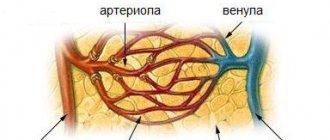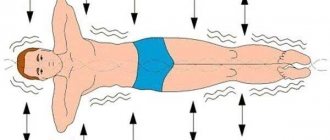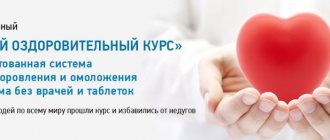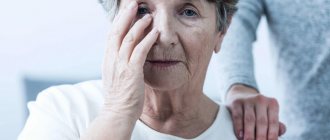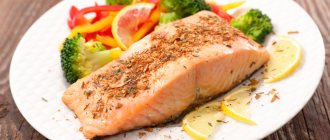Diseases are getting younger. Atherosclerosis has reduced its age to 30-35 years. The reasons for this decrease: stress, smoking, fatty foods, alcohol, sedentary lifestyle. Let's figure out what atherosclerosis is and why it is important to know about the disease.
Atherosclerosis is a common chronic disease that affects arteries throughout the body. Fatty and cholesterol deposits grow in the walls of blood vessels, which disrupt the blood circulation of individual organs or the entire body.
The disease is asymptomatic in the early stages. The patient notices the first signs only when serious changes in the arteries have already occurred. In the initial stages, atherosclerosis can only be detected by a doctor. Therefore, it is important to undergo examination at least once a year.
Symptoms of atherosclerosis of the lower extremities
The first symptoms of the disease appear when blood circulation is already impaired and blood access to tissues is difficult. The patient experiences symptoms such as:
- rapid fatigue during physical activity (usually walking),
- intermittent claudication (pain in the legs that occurs when walking and subsides after a short rest),
- due to disruption of the nutrition of nerve fibers, goosebumps, numbness and convulsions occur,
- the skin on the legs turns pale,
- the temperature of the affected limb decreases,
- muscle atrophy (with unilateral damage, it is easy to notice the difference in volume between the healthy and diseased leg),
- the hair on your legs becomes thinner and falls out,
- the nails and skin on the feet thicken and become rough.
Massage for atherosclerosis
Classic therapeutic massage for atherosclerosis is used extremely carefully and only in the absence of significant clinical manifestations of the disease. The problem is that there is a possibility of injury to the walls of the arteries due to careless exposure to them. As a result, cholesterol plaque and blood clots can break off and lead to fatal consequences.
Note! Massage is especially dangerous if there are signs of thrombosis, thrombophlebitis, or ischemic attacks.
In the absence of a threat of arterial blockage, a segmented leg massage is recommended for atherosclerosis without signs of obliteration (blocking the lumen of the vessel by more than 50%), and gentle rubbing of the lower back. Starting from the second stage of the disease, massage is replaced by reflexology.
Classical massage is not used for cerebral atherosclerosis. Before the start of stages 2-3, the patient is allowed to have a gentle effect on the collar area. In this case, the sides of the neck are not affected. The specialist only gently strokes the shoulders, the area between the shoulder blades and the back of the neck. If after the session the patient experiences numbness in any part of the body, dizziness, drowsiness, or a general deterioration in health, the massage is canceled.
Factors influencing the development of atherosclerosis
- Increase in blood cholesterol over 250 mg%.
- High blood pressure.
- Hormonal factors. For example, it has been proven that estrogens inhibit the development of atherosclerosis.
- Social factors play an important role in the development of atherosclerosis. The example of South Korea shows the connection between the development of atherosclerosis and the level of stress. Atherosclerosis is constantly being discovered in war-affected residents, despite a generally healthy lifestyle.
- Obesity and physical inactivity.
- Hereditary factor.
- Imbalance of the blood coagulation and anticoagulation systems.
Emergence
Atherosclerosis of the vessels of the lower extremities can begin to develop in childhood, when, due to obesity, the arteries begin to become clogged with fat, which can become thick plaques. There will be no symptoms until the patency of the arteries decreases by 2/3 or more, and cholesterol plaques cut off the supply to vital organs.
Mostly atherosclerosis of the vessels of the lower extremities affects men over 40 years of age, but is more widespread in men over 55 years of age. We cannot talk about a genetic predisposition to this disease, because even if it exists, the main impetus for the development of atherosclerosis is excessive consumption of junk food, especially fatty, spicy, smoked, fried foods. Another important factor that leads to this disease is bad habits, which include both smoking and lack of exercise (laziness is also a bad habit).
Stress, nervous breakdowns, hypothermia of the lower extremities are often an impetus that accelerates the onset of atherosclerosis. Among concomitant diseases, it is important to highlight obesity and diabetes mellitus, which have a detrimental effect on the condition of blood vessels.
Atherosclerosis of the vessels of the lower extremities can result in diseases such as myocardial infarction, coronary heart disease, strokes, renal sclerosis leading to renal failure, severe diabetes and other diseases.
Types of atherosclerosis of the lower extremities
The classification is based on the patient's ability to perform daily tasks, the main one being the ability to walk. Doctors distinguish 4 degrees of impairment.
In the first degree of the disease, a person experiences pain during prolonged physical exertion. For example, when walking more than 1 kilometer. At the same time, the patient feels weak and notices that fatigue has set in faster than before.
The second degree includes two stages. In stage A, the patient walks 200-1000 meters before his legs hurt. At stage B, intermittent claudication appears after only 50-200 meters of walking. Both stages are characterized by visual manifestations: the muscle and fat mass of the legs decreases, the nails and skin on the feet become coarser and thicker.
At the third degree, the legs hurt at rest. The same signs continue to develop as in the second degree, and a change in the color of the limb is added to them. The skin becomes purple-bluish in color.
The final, fourth , degree is the stage of destructive changes. The patient develops gangrene and trophic ulcers.
Grades 3 and 4 require urgent medical attention, which most often involves surgery.
Exercises
The exercises can be done many times a day, for a few minutes each time. Do not self-medicate. Therapeutic gymnastics exercises are effective, but only in combination with treatment prescribed by a doctor. You also need to consult a specialist in exercise therapy (physical therapy), who, based on the doctor’s prescriptions and the characteristics of your body, will select the movements that will bring you the maximum effect. We do gymnastics exercises ten times each.
Lying on your stomach
There is only one exercise while lying on your stomach - try to touch your buttocks with your heels ten times without raising your hips.
Lying on your back
- Slowly bend your knees without lifting your feet off the floor. Then we pull the knee towards the body with our hands, the back should lie firmly on the floor. Slowly, with some effort, straighten the leg and repeat with the other.
- We imitate working with pedals, the “bicycle” exercise.
- Raise your straight leg at a distance of your foot from the floor and hold for fifteen seconds.
- We keep one leg bent at the knee, raise the other leg up to a distance of two feet from the floor, turn the toes inward so that the foot is parallel to the floor and hold for ten seconds.
- Keep your legs straight and press them tightly together for ten seconds, then press them firmly to the floor for five seconds.
- Raise your legs in the air, place your palms on the floor and bend both legs at the knees at the same time.
- Wave your arms and legs at the same time, like an insect turned onto its back.
- Place your palms between your tailbone and the floor, raise your legs and cross them in the air, working like scissors.
- Pull the toe of the raised outstretched leg toward you, first in turn, then both legs at the same time.
- With your arms spread out to the sides, lift your two legs and pull your toes away from you and towards you.
In a sitting position
- Bend your knees, rest your palms on your knee joints and move your knees to the sides, and your hands should counteract the movement.
- Bend your chest towards your straight legs, trying to touch your knees with your chest, then clasp your feet with your palms by the soles and touch your shins with your head. It won’t work out the first time, but you need to stretch a little, because the flexibility of the spine will help the whole body stay in shape.
- Pull the foot of the leg bent at the knee towards you, clasp it with your hands and straighten it, continuing to hold on with your hand.
Standing
- Holding the back of the chair, slowly squat while rising on your toes. Do partial squats at first, but over time you need to make them deeper and finally full.
- You can hold onto a chair with your hands, alternately place your feet on your toes, transferring your body weight, you can do it while listening to music, or spring your feet.
- March with your knees high.
- Make circular movements with your leg bent at the knee, keeping your hands on your belt.
- Standing on your knees, bend over, trying to touch your head to the floor.
- Standing straight, alternately raise straight legs.
- Grasp your knee with your hand and twist your foot.
- Walk on your heels.
- Squat on one leg, keeping the other straight.
Treatment of atherosclerosis of the lower extremities
Treatment of atherosclerosis is a complex that includes drug treatment, diet, physical therapy and, if necessary, surgical intervention.
Treatment with medications is aimed at restoring lipid metabolism, blood clotting processes and vascular metabolism. Prescribed:
- sedatives or tonics (for disturbances of nervous or endocrine metabolism),
- lowering cholesterol in the blood,
- vitamins,
- drugs that prevent the development of regional circulatory disorders.
Medical nutrition includes:
- restriction of food calories by 10-15%,
- reduction of animal fats and foods that increase cholesterol (brains, egg yolk, caviar, fatty meats and fish),
- the inclusion of products that help normalize lipid and cholesterol metabolism (cottage cheese, well-soaked herring, cod, oatmeal), vegetable oils (sunflower, corn, flaxseed, cottonseed), vegetables, fruits rich in plant fiber.
The severity of the diet is individual and depends on the degree of metabolic disorder of the patient.
Physical therapy is both a method of treating and preventing atherosclerosis. Physical training compensates for impaired body functions, has a positive effect on the functioning of the cardiovascular system, and nourishes organs and tissues with oxygen.
At the first stage of development of the disease, doctors recommend regularly doing gymnastics and walking. On weekends and during vacations, engage in tourism, skiing, skating, playing sports, etc. During the second stage of development of atherosclerosis, therapeutic exercises and walking are prescribed. Therapeutic gymnastics consists of breathing exercises and exercises with measured strength of the muscles of the arms and legs. With the third and fourth degrees of the disease, excessive physical activity is dangerous for the body. Therefore, you need to train injured limbs according to doctor’s instructions.
Surgical treatment of atherosclerosis is used for functional or morphological changes in the patient.
What types of exercise are most beneficial?
We can distinguish the following types of physical activity that are beneficial in the treatment of atherosclerosis, and can also be used for preventive purposes:
- Running is a very good aerobic exercise; it helps keep the cardiovascular system as well as the respiratory system in good condition. Also, with the help of running, the required body weight is achieved and excess fat is burned.
- Walking – according to scientific research, thanks to aerobic exercises such as walking and jogging, the risk of atherosclerosis can be significantly reduced. Walking is considered more beneficial. When the patient is unable to run, brisk walking is indicated.
- Swimming is a very good exercise, thanks to which absolutely all muscles are toned. Due to the fact that swimming is an aerobic exercise, unnecessary fat will be burned and, accordingly, extra pounds will be lost. Swimming lessons are simply ideal for those people who have any joint pathologies, for example, such as atherosclerosis.
- Cycling – strengthens the respiratory and cardiovascular systems well, and also helps tone the muscles of the lower body. Very useful for the prevention of atherosclerosis and for the formation of thighs, buttocks and calves.
- Yoga classes - simple asanas can prevent the appearance of atherosclerosis. Yoga improves blood circulation throughout the body and increases muscle tone.
